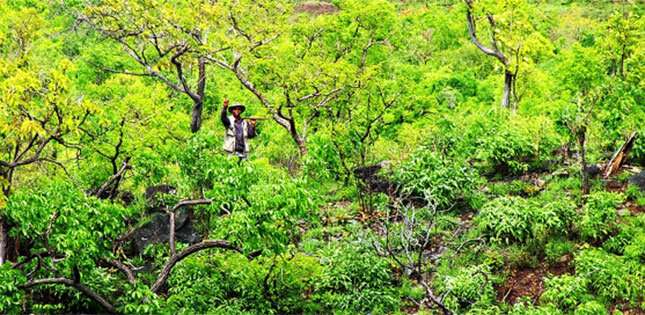A Central African shield amalgamation tale: Earth's next supercontinent

The Earth has a 4.6-billion-year history; since about 1.9 billion years ago, it has been punctuated by a quasi-cyclic formation and break up of supercontinents—large landmasses that comprised the majority of the Earth's continental crust. The formation and disruption of supercontinents had great impact on the environment, climate and possibly Earth's interior.
Reconstructing the processes of amalgamation and disruption of these supercontinents is crucial to our understanding of plate tectonics, plate motion, thermal balance of the Earth, and long-term environmental changes.
There is a large consensus that around 200 million years from now the Earth will form another supercontinent, possibly centered in present day Asia.
Among the known supercontinents that have existed in the past, the most challenging to reconstruct and understand are the oldest. Reconstructing the shape, processes and consequences of the formation of past supercontinents is an extremely challenging task: the continental crustal fragments and the orogens that sutured the supercontinents are distributed around the world and scattered in every present-day continent. This is especially true for the oldest supercontinents. Columbia, the oldest fully known, was a supercontinent between 2.1-1.8 billion years ago.
An international research team lead by third-year Ph.D. student Ariuntsetseg Ganbat and Tatsuki Tsujimori, professor at the Center for Northeast Asian Studies (CNEAS), has clarified the crustal growth history of the Central African Shield (Congo craton) - one of the oldest continental pieces on the planet that formed part of the supercontinent Columbia (a.k.a. Nuna).

The study revealed the age and chemical composition of a group of granites at the western end of Tanzania and indicates that such continental mass grew significantly during the amalgamation of Columbia (1.9 billion years ago) and also during the amalgamation of Gondwana (a.k.a. Pannotia), another supercontinent that formed 0.6 billion years ago.
"The study represents a big step towards understanding the geometry and mechanisms operating in the Earth 1.9 billion years ago," said Tsujimori.
More information: Ariuntsetseg Ganbat et al. Crustal evolution of the Paleoproterozoic Ubendian Belt (SW Tanzania) western margin: A Central African Shield amalgamation tale, Gondwana Research (2020). DOI: 10.1016/j.gr.2020.12.009
Provided by Tohoku University




















